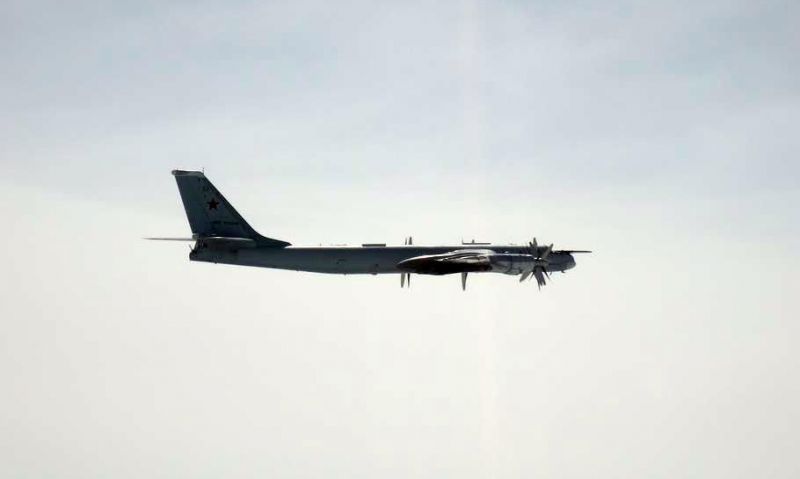
North American Aerospace Defense Command says it “detected, tracked, and intercepted” four bombers — two Russian and two Chinese — flying near Alaska on Wednesday.
North American Aerospace Defense Command says it “detected, tracked, and intercepted” four bombers — two Russian and two Chinese — flying near Alaska on Wednesday.
The Russian Tupolev Tu-95 Bears and Chinese H-6 strategic bombers were operating in the Alaska Air Defense Identification Zone but “did not enter American or Canadian sovereign airspace,” NORAD announced in a press release after the incident.
The intercept was handled by U.S. and Canadian fighter jets, the statement said. The Russian and Chinese bombers were not considered a threat, according to NORAD.
A spokesman for NORAD, based in Colorado Springs, Colo., Capt. Sean Carter, told Stars and Stripes by email that he had no further information available on the incident.
An ADIZ is an area beyond a country’s airspace where, for national security, it exerts some air traffic control and requires aircraft to identify themselves. They are not formally recognized under international law, “although various norms pertain,” according to the Congressional Research Service.
On Sunday, Russian fighters intercepted a pair of Air Force B-52 Stratofortress bombers in international airspace over the Barents Sea, the area north of Scandinavia and eastern Russia, while the bombers were en route to Mihail Kogalniceanu Air Base, Romania, according to the service.
The B-52s continued their flight without changing course, according to U.S. Air Forces Europe and Africa.
- News

